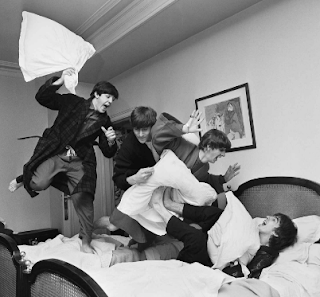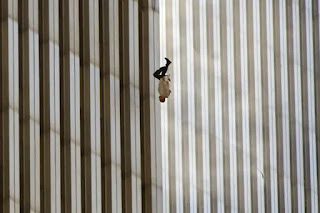The Camera's History and Basic Functions
1. Explain the "camera obscura" effect. How is it achieved?
Well, the camera obscura effect was founded by Greek and Chinese philosophers. It's achieved by having a dark room with a small hole made in a wall. When light is focused through the small hole, the scene that is outside of the room is projected upside down on the wall opposite of the one with the hole.
2. What invention during the 17th Century helped people get a step closer to creating the modern camera?
The invention created by Isaac Newton and Christian Huygens during the 17th century was the glass lens.
3. What were the parts of the first modern camera invented by Niépce?
The parts of the first modern camera invented by Niépce were a glass lens, dark box, and film.
4. What do modern digital camera's have in common with Niépce's camera?
Modern digital cameras have a glass lens and film in common with Niépce's camera.
5. What do digital cameras use to capture an image?
To capture an image, digital cameras use digital film.
6. What is the difference between Auto mode and Program mode?
The difference is that in Auto mode, the camera will control flash and exposure. In Program mode, the camera doesn't control flash.
7. What is the Portrait mode used for? How does it work?
The Portrait mode is used for blurring out the background. The camera will use the fastest lens setting.
8. What is the Sports mode used for? (not just sports) How does it work?
The Sports mode is used for freezing a motion. The camera will use the fastest shutter speed.
9. What does the photographer have to do in Manual mode?
In Manual mode, the photographer has to set the shutter and aperture mode.
10. Why should you do a half press on the trigger button?
You should do a half press on the trigger button because it makes your camera respond faster, you can have more control over your focus, and you can have better composition.

11. What does this symbol mean and when would you use this?
The symbol means that the flash on your camera is not on. You would use it when you want to use the natural light where you are.

12. What does this symbol mean and when would you use this?
The symbol means that the flash will be on by default. You would use this when the camera thinks it needs more light.
13. What happens to your photo if there's too much light?
When there's too much light, your photo will be washed out.
14. What happens to your photo if there's not enough light?
When there's not enough light, your photo will be too dark.
15. What's a "stop"?
A stop is used to represent a change in the brightness of light.
16. How many stops brighter is the new planet if there are two suns instead of one?
The new planet would be 1 stop brighter.
17. How many stops brighter is the new planet if there are four suns instead of one?
The new planet would be 2 stops brighter.
18. What affect does a longer shutter speed have?
The effect that the longer shutter speed has is that it has more light.
19. What affect does a shorter shutter speed have?
The effect that the shorter shutter speed has is that is has less light.
20. What does the aperture control?
The aperture controls how much light is going through the camera opening.
21. When adjusting the aperture, how can you increase the amount of light?
To increase the amount of light, you have to have smaller f-stop numbers/ a larger camera opening.
Well, the camera obscura effect was founded by Greek and Chinese philosophers. It's achieved by having a dark room with a small hole made in a wall. When light is focused through the small hole, the scene that is outside of the room is projected upside down on the wall opposite of the one with the hole.
2. What invention during the 17th Century helped people get a step closer to creating the modern camera?
The invention created by Isaac Newton and Christian Huygens during the 17th century was the glass lens.
3. What were the parts of the first modern camera invented by Niépce?
The parts of the first modern camera invented by Niépce were a glass lens, dark box, and film.
4. What do modern digital camera's have in common with Niépce's camera?
Modern digital cameras have a glass lens and film in common with Niépce's camera.
5. What do digital cameras use to capture an image?
To capture an image, digital cameras use digital film.
6. What is the difference between Auto mode and Program mode?
The difference is that in Auto mode, the camera will control flash and exposure. In Program mode, the camera doesn't control flash.
7. What is the Portrait mode used for? How does it work?
The Portrait mode is used for blurring out the background. The camera will use the fastest lens setting.
8. What is the Sports mode used for? (not just sports) How does it work?
The Sports mode is used for freezing a motion. The camera will use the fastest shutter speed.
9. What does the photographer have to do in Manual mode?
In Manual mode, the photographer has to set the shutter and aperture mode.
10. Why should you do a half press on the trigger button?
You should do a half press on the trigger button because it makes your camera respond faster, you can have more control over your focus, and you can have better composition.
11. What does this symbol mean and when would you use this?
The symbol means that the flash on your camera is not on. You would use it when you want to use the natural light where you are.
12. What does this symbol mean and when would you use this?
The symbol means that the flash will be on by default. You would use this when the camera thinks it needs more light.
13. What happens to your photo if there's too much light?
When there's too much light, your photo will be washed out.
14. What happens to your photo if there's not enough light?
When there's not enough light, your photo will be too dark.
15. What's a "stop"?
A stop is used to represent a change in the brightness of light.
16. How many stops brighter is the new planet if there are two suns instead of one?
The new planet would be 1 stop brighter.
17. How many stops brighter is the new planet if there are four suns instead of one?
The new planet would be 2 stops brighter.
18. What affect does a longer shutter speed have?
The effect that the longer shutter speed has is that it has more light.
19. What affect does a shorter shutter speed have?
The effect that the shorter shutter speed has is that is has less light.
20. What does the aperture control?
The aperture controls how much light is going through the camera opening.
21. When adjusting the aperture, how can you increase the amount of light?
To increase the amount of light, you have to have smaller f-stop numbers/ a larger camera opening.



Comments
Post a Comment